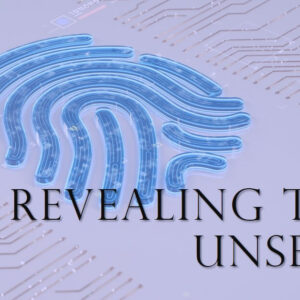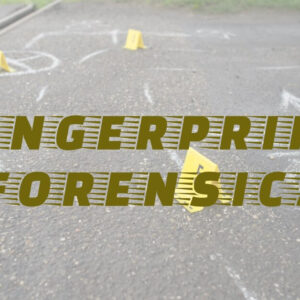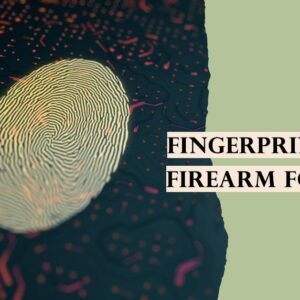Have you ever stopped to think about your fingertips? They’re something we use every day without giving much thought, right? But did you know that they hold a fascinating secret? It’s true! Each person’s fingerprints are unique, like a special code just for them. And that’s what dactyloscopy is all about – studying those one-of-a-kind patterns at our fingertips.
Fingerprints have captivated people for centuries. Even ancient cultures recognized their uniqueness and used them as personal stamps or signs. However, it wasn’t until more recent times, around the late 1800s, that scientists like Sir Francis Galton and Sir Edward Henry truly began to understand the significance of fingerprints in solving crimes.
In this exploration of dactyloscopy, we’ll delve into how fingerprints are formed, how they assist detectives in apprehending criminals, and how they’re utilized in security systems.
What is Dactyloscopy?
The study of fingerprints is known as dactyloscopy. This field of forensic science specifically examines the distinct patterns present on the fingertips of human hands. These patterns act as a natural barcode, each one being unique to a particular individual. They play a crucial role in identification, forensic inquiries, and security measures.
Why are Fingerprints Unique?
Did you know that fingerprints are one-of-a-kind for every person? This is because they are formed through a mix of genetic factors and random occurrences during a baby’s development in the womb. Let’s explore why fingerprints are so unique!
- Genetic Factors: The formation of fingerprints is primarily influenced by our genetic makeup passed down from our parents. Despite this, even identical twins, who have identical DNA, possess distinct fingerprints. This indicates that genetics is not the sole factor contributing to the individuality of fingerprints.
- Random Processes During Development: The formation of fingerprints is guided by genetics, but their actual development is shaped by random processes that occur during fetal development. It is fascinating to know that around the 10th week of pregnancy, the fetus starts to develop tiny ridges on its fingertips. These ridges are a result of the pressure exerted by the growing fetus and the environment within the womb.
- Environmental Factors: Factors such as the position of the fetus in the womb, the flow of amniotic fluid, and other environmental conditions also play a role in shaping fingerprints. These elements contribute to the unique variations in ridge patterns, even among twins who look identical.
- Pattern Formation: As the baby grows inside the womb, the ridges on the fingertips start to take shape and create individual patterns. These patterns are influenced by a combination of genetic factors and chance occurrences, leading to one-of-a-kind designs of loops, arches, and whorls.
- Permanent and Unchanging: Did you know that fingerprints are formed before birth and remain the same throughout a person’s life, unless there is an injury or disease that alters them? It’s fascinating how the ridges on our skin stay permanent and don’t change much over time.
How are Fingerprints Analyzed?
Analyzing fingerprints is a careful and precise procedure that entails studying the distinct characteristics and designs found on the ridges of the skin. Let’s delve into a comprehensive overview of how fingerprints are examined:
1. Collection of Fingerprints
To analyze fingerprints, the initial step is to gather them from a surface, which can range from smooth surfaces like glass or metal to porous surfaces like paper or cardboard. Different techniques are available for collecting fingerprints.
- Powder Dusting: When using this technique, a fine powder, typically black or white in color, is dusted onto the surface where the fingerprints are located. The powder sticks to the oily substances left by the skin, revealing the prints.
- Chemical Development: Certain substances like ninhydrin or cyanoacrylate (super glue) fuming are effective in revealing hidden fingerprints that cannot be seen with the naked eye. By interacting with the residues of the fingerprint, these substances bring out the prints for examination.
- Lifting: After making the fingerprints visible, the next step is to transfer or lift them onto a suitable medium for further analysis. This is commonly achieved by using adhesive lifters, fingerprint tape, or gel lifters.
2. Examination of Ridge Patterns
After collecting the fingerprints, they are carefully examined under magnification to identify the ridge patterns. Specialists search for distinct characteristics like:
- Ridge Endings: Points where ridges abruptly end.
- Bifurcations: Points where a single ridge splits into two.
- Island Ridge: A short ridge that connects two parallel ridges.
- Enclosures: An area where ridges form a complete loop.
Forensic experts can determine the classification of a fingerprint into one of three main categories, namely arches, loops, or whorls, by carefully examining these characteristics.
3. Comparison and Matching
After identifying the characteristics of the fingerprint, they are then cross-referenced with known fingerprints in a database. This could be a database maintained by local law enforcement agencies or a national database such as the Automated Fingerprint Identification System (AFIS). The objective is to discover a match or similarity between the gathered print and the prints already on file.
4. Verification and Evaluation
Once a possible match is identified, skilled forensic experts verify and evaluate the fingerprint analysis. They carefully examine the unique characteristics of the prints to validate the match. This meticulous process demands precision and expertise for reliable results.
5. Reporting and Presentation
The results of the fingerprint analysis have been carefully recorded in a detailed report. This report outlines the comparison process, highlights any matches or similarities discovered, and presents the conclusions drawn by the expert. In cases where the fingerprints serve as evidence in a legal proceeding, the expert might need to testify in court and explain their findings to the judge and jury.
Conclusion
Dactyloscopy is an intriguing area that is essential in forensic science and law enforcement. Experts can solve crimes, identify people, and maintain security by examining the detailed patterns on our fingertips. Next time you glance at your fingertips, keep in mind that they contain a special code that distinguishes you from others.






